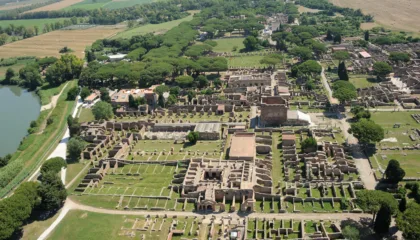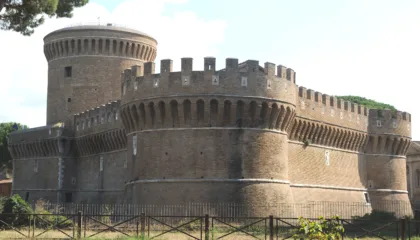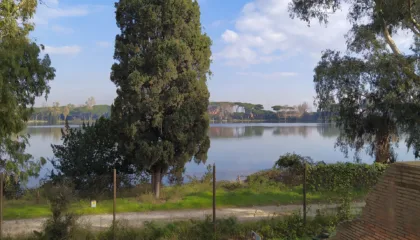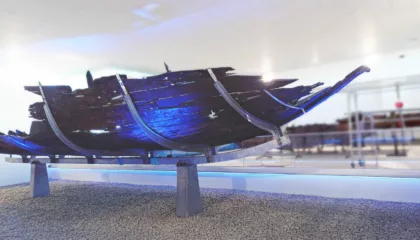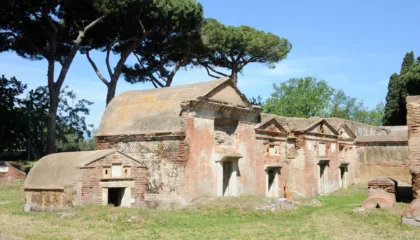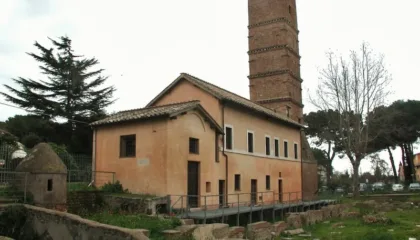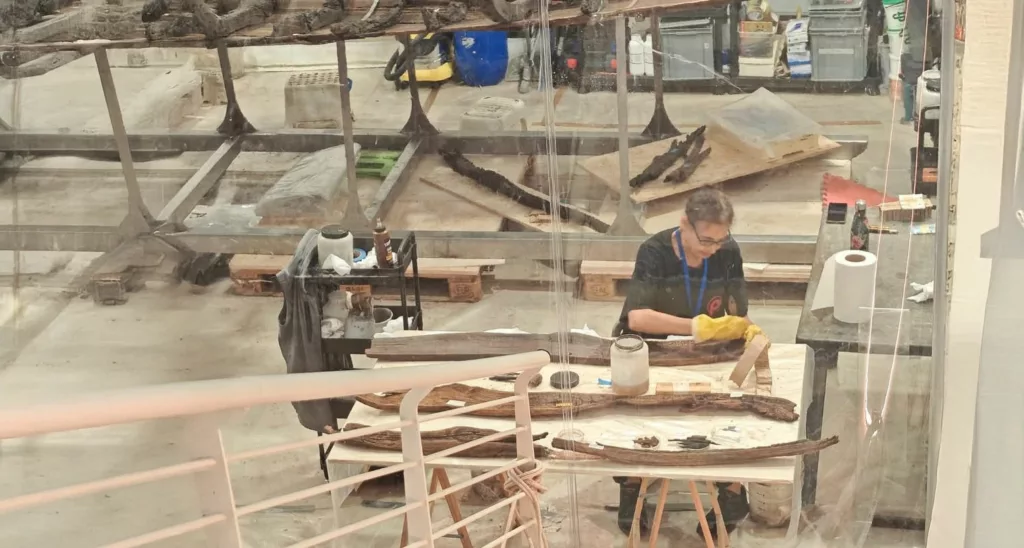The Ships of Fiumicino: Initial Restoration Work
The Ships of Fiumicino, due to the circumstances and time of their discovery, have always posed challenges and questions for scholars, especially restorers, who have wondered how to preserve wood that has lasted for just under two thousand years in an environment that was both buried and humid — and which was suddenly exposed to open air, a shock of no small consequence for the plant fibers that composed it.
The ships were discovered in the soil next to the museum between 1958 and 1965: they came to light during the construction of Leonardo da Vinci Airport, in a section of what had once been the great port of Imperial Rome. Sunk between the 2nd and 4th centuries AD, after being decommissioned — or more precisely, abandoned — in a corner of the port destined to become a ship graveyard, they settled on the seabed in complete stillness, first underwater, then under sand and sediment, until the excavations of the late 1950s. While it was a thrill for archaeologists to uncover them, for the ships it was a real shock.
From the outset — as noted by the archaeologist who oversaw the digs at the time, Valnea Santa Maria Scrinari — the issue was how to safeguard the wood, which clearly would not withstand the change in conservation conditions. The Central Institute for Restoration was immediately contacted and provided support from the start. But of course, this was the early 1960s, and very few Roman-era hulls had yet been found (the Ships of Nemi had been destroyed by fire during World War II), so the problem of conserving ancient waterlogged wood had rarely been addressed. Solutions were found, the first of which was to cover the hulls with sand and cloths to control the evaporation of water from the wood. Following that, the hangar was built — which would go on to become the Museum of Ships.
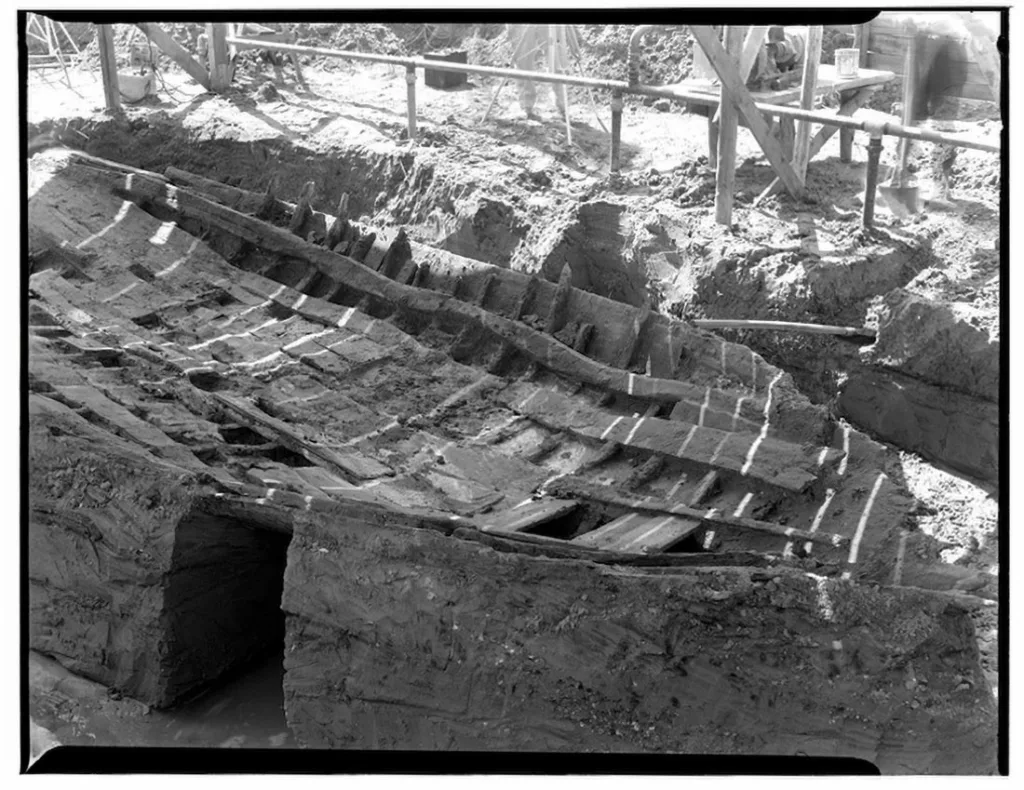
The Ships of Fiumicino: Current Restoration Work
Today, the Ships of Fiumicino need restoration more than ever.
In fact, restoration is underway, beginning with the ship Fiumicino 2. Once the work on this ship is completed, the in progress site will move on to the other ships: the large caudicaria Fiumicino 1, then Fiumicino 3, the small sailing ship Fiumicino 4, and finally the Fisherman’s Boat, Fiumicino 5.
But what does this restoration involve, and why is it necessary?
It consists of removing the substances that were applied to the ship’s wood from the time of discovery up to the 1980s. At that time, as no proper method had yet been developed for restoring waterlogged wood, conservation practices that were believed effective were applied — but over time proved unsuitable. Resins, stains, and acrylic substances were used with the intention of protecting the wood; however, these materials formed an outer shell on the surface of the wood without significantly penetrating the structure, failing to consolidate it. As a result, the wood itself has remained rather fragile.
Based on over fifty years of experience with ship conservation and the latest techniques for restoring waterlogged wood, the current intervention resembles a kind of de-restoration. It involves removing the old substances (resins, stains, acrylics) using extraction methods with gel or cellulose pulp containing alcohol- or ketone-based solvents.
The ongoing intervention on Fiumicino 2 is already yielding positive results: from a conservation standpoint, the removal of applied substances allows for a proper consolidation treatment, based on the latest research on wet wood restoration; from an aesthetic perspective, the original color of the wood — which had turned almost black due to the applied resins and acrylics — is once again visible.
The goal is to recover the color of the original planks in the ship’s hulls. This color also matches the wood planks used as exterior sheathing in the 1976 restoration (that date is actually carved into the replacement planks).
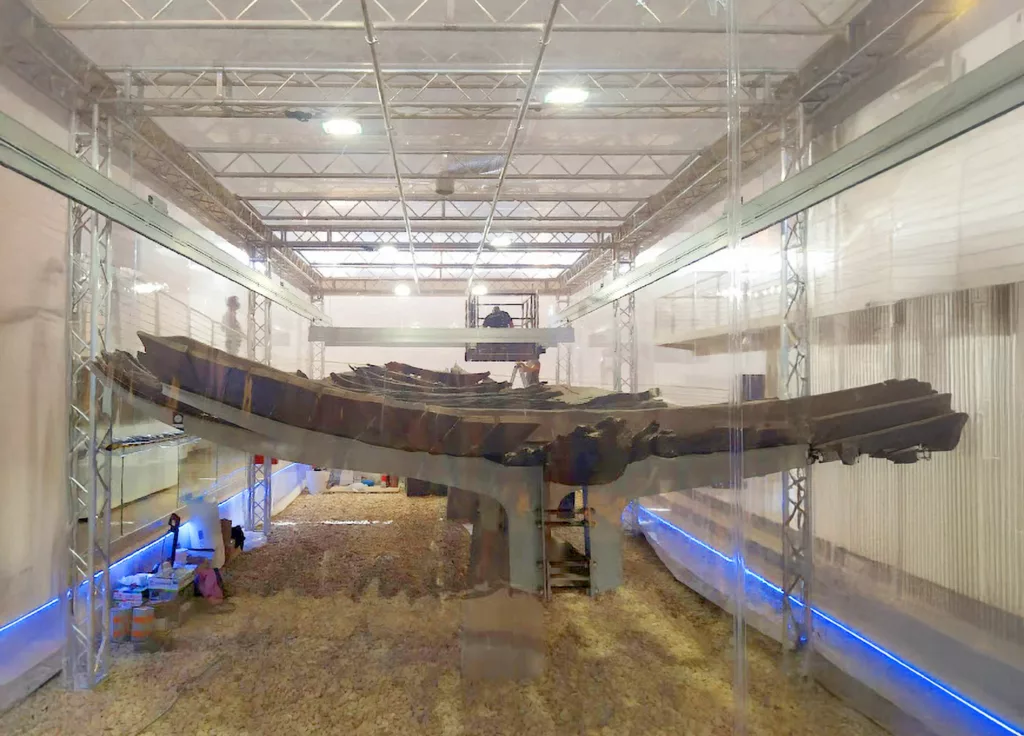
Restorers at Work in Front of Visitors
Today, visitors to the Museum of Ships in Fiumicino (free admission, open Tuesday to Sunday from 10 am to 4 pm) can see restorers at work on the caudicaria ship Fiumicino 2 inside a specially designed transparent case. They can observe the difference between the areas where restoration has already been carried out and yielded results, and those where work is still ongoing.
Visitors are encouraged to return to the museum multiple times throughout the year to see the progress on the restoration of Fiumicino 2 — and later, the other ships. The Museum of Ships is, in every sense, a living and dynamic museum. The strong turnout in the first two months since reopening has given it even more momentum. Those wrecks, which two thousand years ago were just some of the many ships navigating the port, are now unique. If they could speak, they would be thrilled to tell their story.
